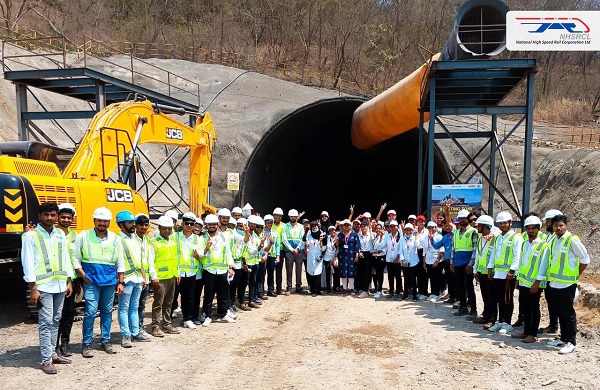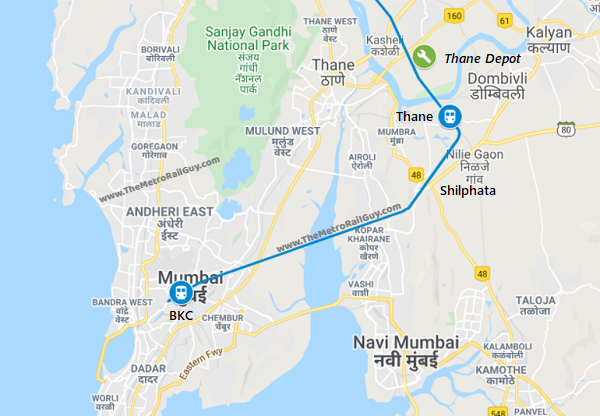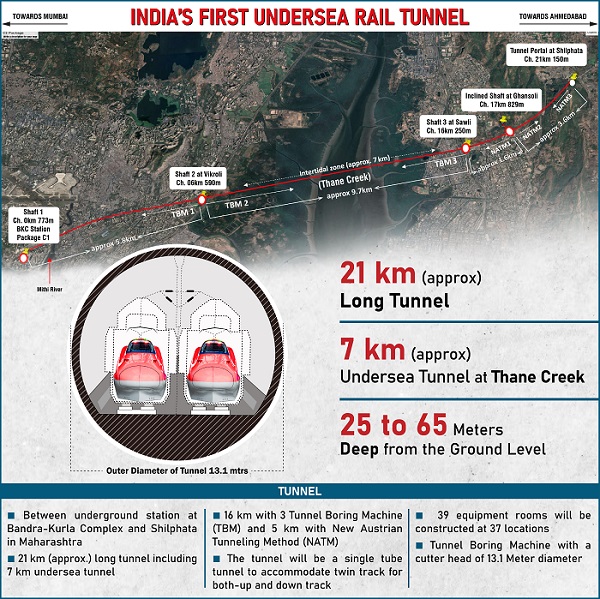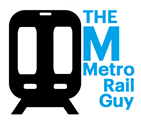Afcons Completes Mumbai – Ahmedabad Bullet Train’s ADIT Tunnel
Afcons Infrastructure on Wednesday completed tunneling work for a 394 meter long Additionally Driven Intermediate Tunnel (ADIT) of the 508.17 km Mumbai – Ahmedabad High Speed Rail (MAHSR Bullet Train) project.
This ADIT tunnel with a 42m deep inclined shaft was built in 6 months on the eastern-side of 20.377 km underground Package C-2 (BKC – Shilphata). Its main-purpose to provide construction workers and vehicles access to a point from where excavation works for the main-line’s tunnel can start by the New Austrian Tunneling Method (NATM).

The ADIT tunnel’s portal is located at Ghansoli, Navi Mumbai (view on Google Maps). From its extreme-end, NATM tunneling will be done towards opposite sides – westward to Sawli’s Shaft-3 for 1.6 kms and eastwards towards Shilphata’s tunnel portal covering a distance of roughly 1.8 kms.


India’s National High Speed Rail Corporation Ltd. (NHSRCL) had awarded Afcons Infrastructure with Package C-2’s Rs. 6397.27 crore contract in June 2023 with a 1888 day (5.17 years) deadline.
Afcons will construct 3 shafts at BKC Station, Vikhroli, and Sawli at approximate depths of 36m, 56m and 39m respectively to launch and retrieve 3 Mega Tunnel Boring Machines (TBMs) with a diameter of roughly 13.1 meters to bore approximately 16 kms of tunnel.



A cool video shared by Ashwini Vaishnaw on X can be viewed here.
Artful Dodger (@Rahul Chels) on X recently posted some fantastic shots of the 56m deep Vikhroli Shaft-2 – check them out over here. Afcons will use that “infinity-shaped” shaft (see details) to launch 2 Herrenknecht tunnel boring machines (TBMs) – one towards Shaft-1 (BKC Station’s east-end) and another towards Shaft-3 in Sawli, Navi Mumbai.
For more updates, check out the High Speed Rail section or my Home Page! Sign up for free instant email notifications on new posts over here. Like this post? Get early-access to updates and support the site over here.
– TMRG




If it can go via shilphata, it could have gone via NMIA , to give a boost to navi mumbai. But for that a strong local govt push would have been reqd.
NMIA will be connected by the Mumbai – Pune line
Im also interested in working with you, afcons group its a famous thinking by PMO japnese technology, if can I joined the group its my pleasure am B.pharma graduate perfection in First aider plz give my suggest I’m hungry to work at ghansoli
Hey TMRG,
I just saw the tunnel design and was curious about one thing.
If there is a single tunnel with twin tracks with high speed trains, how is the aerodynamics different from having twin tunnels, one for each track?
Will two trains be able to cross each other at high speed? Will there be a speed limit for the trains within this tunnel? Or will they schedule trains so that there is never a situation where trains cross each other inside the tunnel?
How are similar HSR tunnels worldwide designed?
I may be wrong but from what I have seen the speed of shinkansen in tunnels in Japan is 200 kmph. I expect thus to continue in india as well
Thanks for the input, but does that stay the same for when two trains cross at high speed in same tunnel or do they have twin tunnels?
Would there be any significant turbulence at high speeds in enclosed spaces?
Hi, NHSRCL must have contracted out a Computational Fluid Dynamics (CFD) and Subway Environmental Simulation (SES) simulation study of the tunnel during the design stage. All metro orgs in India which have an underground component do this.
Good read: https://www.computationalfluiddynamics.com.au/dynamic-cfd-simulations-rail-tunnel-ventilation/
C2 is too long of a tunnel to put in a single-train usage restriction. I imagine speeds will be restricted not just because of the tunnel but also due to the relatively short distance. Same for Sabarmati – Ahmedabad (elevated)
Thanks.
Nice article explaining stuff clearly and measuring what we can otherwise just guess. No mention there on one tunnel-two train aerodynamics though.